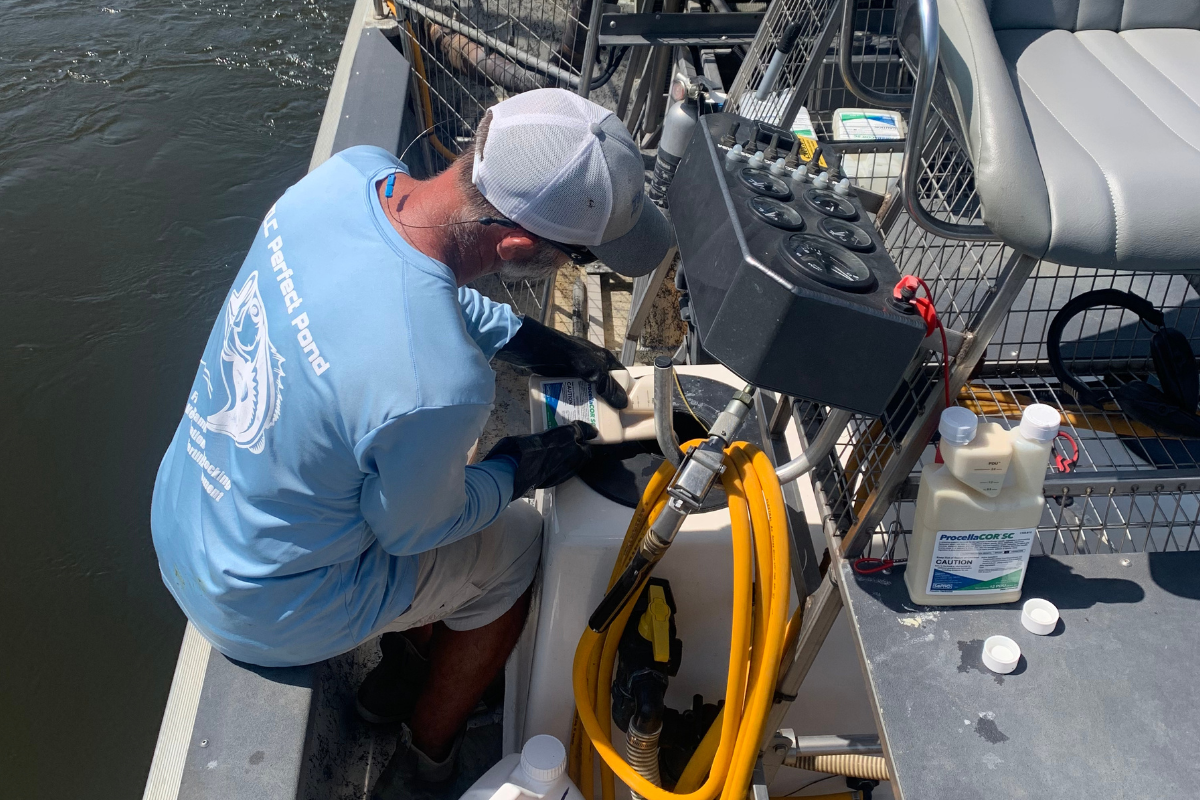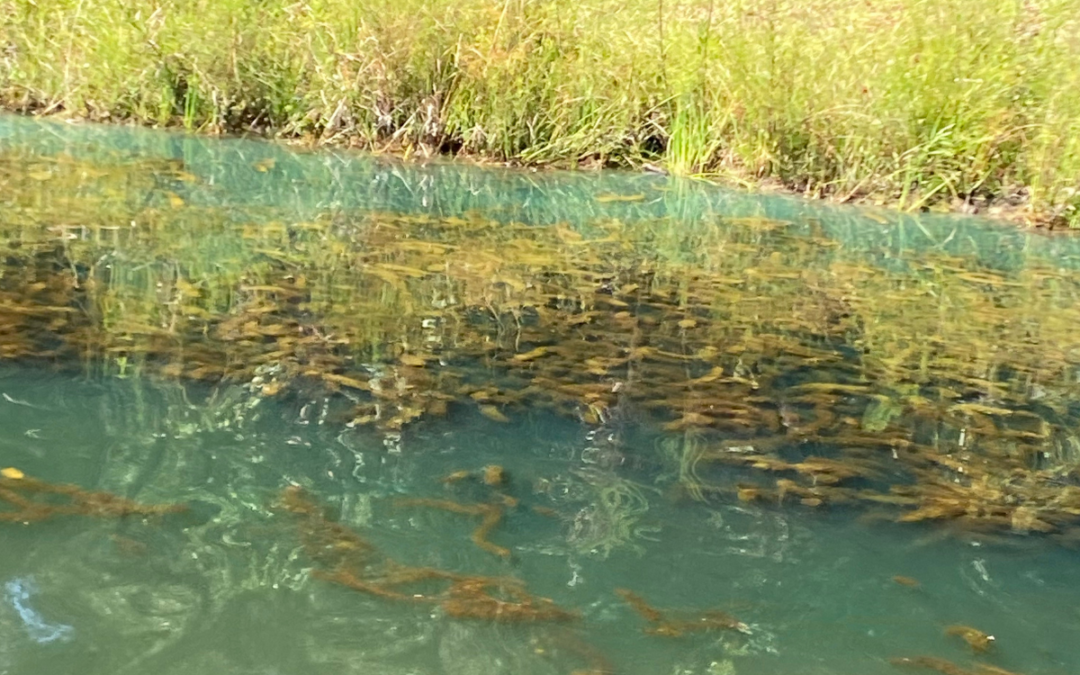Milfoil is one of the problematic aquatic weeds that we battle as we manage ponds across south Georgia and north Florida. There are dozens of milfoil species, but the one that causes the most headaches for our customers is Eurasian Watermilfoil (Myriphyllum spicatum). This is a non-native, invasive species that was likely brought to the US as an aquarium plant. It can now be found in ponds and lakes across the country with a heavy presence in the northeastern United States.
Milfoil may look like a delicate aquatic weed, but it is extremely persistent and spreads fast. It is a subsurface aquatic weed that roots in the pond substrate. Thick mats of milfoil can cause a wide range of problems for native vegetation and fish populations in a pond or lake.
Milfoil reproduces via plant fragments, so disturbing it can often make it worse. When chopped or cut, tiny plant fragments will fall to the bottom and root. This is how it is able to spread so quickly in a pond or lake and also why mechanical removal is ineffective means for controlling it.

Problems Caused by Milfoil
Milfoil will quickly form dense patches that block sunlight in shallow areas of a pond or lake. Because it grows so fast, it can easily smother any native vegetation in a pond. By blocking the sunlight, native vegetation isn’t able to thrive and the natural vegetative diversity of a pond is reduced.
Thick patches of milfoil will also reduce the recreational quality of a pond or lake. The dense subsurface vegetation can cause issues for inboard, outboard, and most certainly trolling motors. Whether you’re using the body of water for fishing, boating, or watersports, a milfoil infestation will reduce your ability to enjoy those activities.
It can also have a negative effect on the fish populations in the pond. Milfoil provides an excellent habitat for bluegill and other prey fish to hide from predators. But predators like largemouth bass aren’t able to effectively forage in dense patches of subsurface vegetation. The result is that bass don’t grow as fast because they expend too much energy capturing prey.
This can also cause the prey populations to become unbalanced over time. Because there is not enough predation on the sunfish, they can become overpopulated and unbalanced. A healthy pond should have adequate predation pressure to balance the size and numbers of the prey populations.
How to Manage Milfoil
As mentioned above, mechanical removal is not effective for most subsurface weeds that reproduce via plant fragments. The mechanical removal process usually creates more problems than it solves. Because the milfoil leaves are so delicate, they easily break into tiny pieces which root in the pond or lake bottom. This results in the weed coming back with a vengeance in just a few weeks.
One effective way to manage milfoil over the long-term is reducing the water clarity in the pond or lake. Improving water fertility through liming and fertilization will reduce the water clarity and the amount of sunlight that reaches the subsurface weeds. Fertile water also increases phytoplankton populations and stimulates the base of the pond food chain.
Although reducing water clarity is a great option or reducing subsurface weed growth, it’s not a fast solution. Chemical removal is the fastest and most effective way to remove milfoil. We prefer to significantly reduce the subsurface weeds with an aquatic herbicide, and then adjust the water clarity so that it doesn’t reappear and thrive. This is the most comprehensive approach for managing problematic subsurface weeds like milfoil.
There are several aquatic herbicides approved for treating milfoil, but our most effective option is called ProcellaCor. This is a broad-spectrum aquatic herbicide that effectively kills a wide range of pond weeds. It can be applied on the surface of the water, but it is especially effective when sprayed into the water using our subsurface spraying rig. This ensures that the treatment is more evenly applied across the entire expanse of unwanted vegetation.
Let Up Help Improve Your Pond!
If you’re in the south GA or north FL areas and need help with overgrown vegetation in your pond or lake, complete this form and we’ll contact you to schedule a time to meet. We look forward to turning your pond into a productive fishery for years to come!

